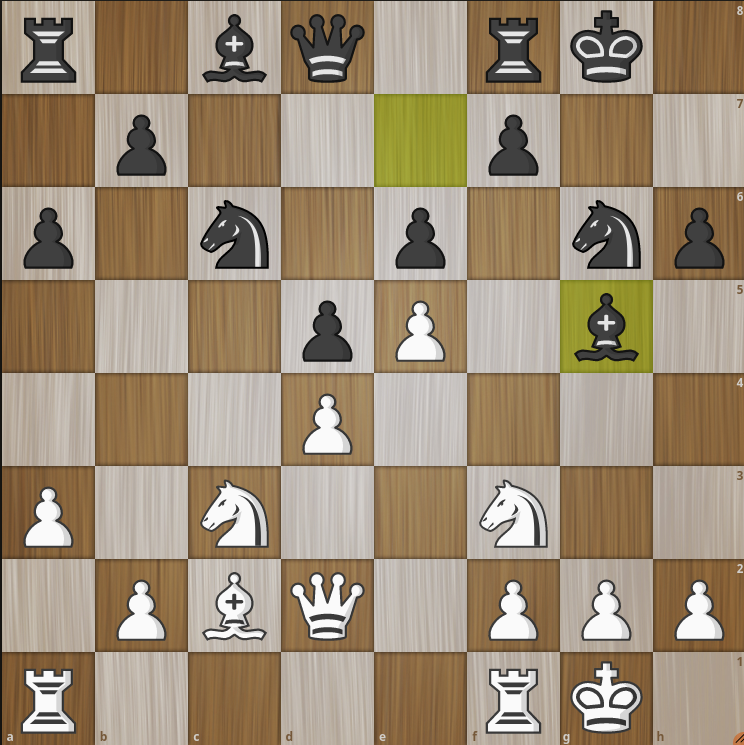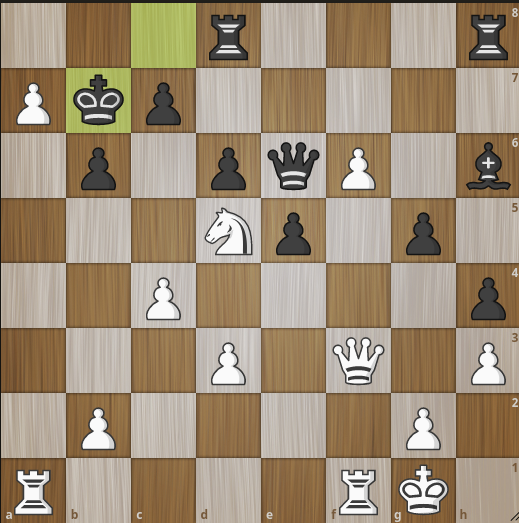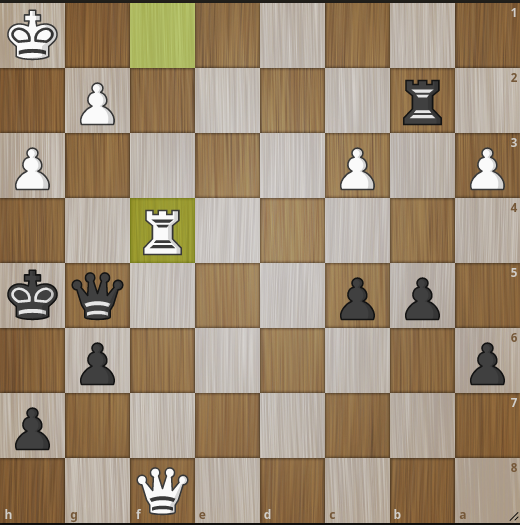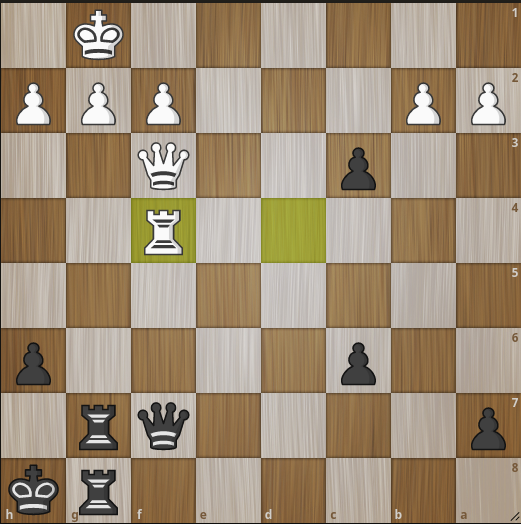4 minutes
chess thinking process
chess tactics puzzles and thinking process
hi!
so instead of computers this time i’ll be talking about chess :)
in particular i’ll be talking about chess tactics and an almost step-by-step process of thinking that a lot of chess players already know about and employ in their games.
i play a lot of blitz (3+0) and bullet (1+0) chess, and tactics are an important element in them because of the time controls and blunder frequency.
a lot of crazy positions can happen in these games because there’s no time to calculate lines deeply.
being able to recognize tactics easier will improve your ability to play faster time controls.
but you should study the process i’m talking about in longer time controls to really get used to it.
how to analyze a chess position
in chess puzzles your goal is usually to checkmate your opponent or gain material advantage that can help you win easier in the endgame phase.
in a normal game, you also have to think about what your opponent is doing or planning.
step 1: analyze opponent move
let’s take this position from a bullet game as an example:

here black played Bg5 and it’s white to play.
when we look this move we can clearly see that the queen is under attack. since the bishop has less value than the queen, this is a bad exchange for us :)
so clearly this is a threat that we have to address.
white plays Nxg5 and black plays Qxg5
so now the trade would be equal if white decides to take the queen, and we have addressed the threat.
step 2. forcing moves (checks, captures and threats)
what did with Bg5 was a forcing move, because if white doesn’t respond he will be at disadvantage.
after assessing our opponents move, we decide whether it grants a forced response. if it doesn’t, we can look for our own forcing moves.
forcing moves are easier to calculate, since they force the opponent to respond with limited possibilities.
by combining forcing moves in a sequence, it’s easier to calculate more moves into the position.
check
first you look for the most forcing move, the check.
check is the most forcing move since it requires a direct response:
-
capturing the checking piece
-
blocking the check (blocking the check can lead to a pinned piece)
-
moving the king
moving the king can lead to another check, or the capture of a different piece after the king moves.
observe the following position as an example:

here it’s white to play. best move here is Nf4. moving the knight opens the diagonal, which is a discovered check by the queen. at the same time the knight attacks the black queen. black played c6, and the queen was captured next move.
the best move for black after Nf4 would be e4, which is followed by Nxe6 exf3 Nxd8 Rxd8, still a winning position for white.
capture
the next most forcing move is the capture, which usually forces the opponent to recapture.
remember a capture can also be a check at the same time!
take the following position:

here it’s black to play, and white just played Rf4.
when black plays Qxg2# and captures the pawn, it’s checkmate!
threat
the last forcing move is the threat. a threat forces the opponent to:
- move the threatened piece
- make a bigger threat
for example the following position:

here white just played Rf4, threatening to capture the black queen.
black plays: cxb2. black will sacrifice the queen, and promote the pawn next move (checkmate in 2, which is a bigger threat than capturing the queen!)
so the game goes:
Rxf7 b1=Q+ Qd1 Qxd1#
i hope now you understand forcing moves: checks, captures and threats.
you can remember this easily like CCT, if you check these every move you will also start noticing the hidden tactics in your games!
step 3. position improvements
if your opponent hasn’t made any threats, and you haven’t found any CCT that lead to checkmate or material gain, you should look for ways of improving your current position or advancing a strategy.
- finishing piece development
- prophylactic moves (like sicilian najdorf variation a6 or similar, to take away good moves from your opponent)
- getting your pieces to better squares where they have more they can do
- coming up with a plan to attack your opponent
the end
and that’s it :)
thank you for reading!
737 Words
2021-02-18 00:11